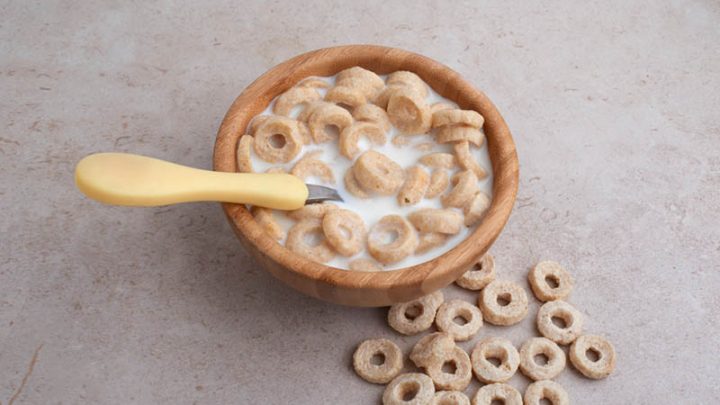It is relatively common knowledge that honey is unsafe for young babies, but what about when it’s processed, for instance, in cereal?
Can babies have Honey Nut Cheerios?
The answer to the question: Can babies have Honey Nut Cheerios? is a resounding NO because even processed foods contain the botulism spores that are in raw honey.
You might hear a lot of people say that because the honey was processed it won’t have the poisonous substance that causes infant botulism, however, that fact couldn’t be further from the truth.
The American Academy of Pediatrics has debunked this claim and says that botulism spores linger even in baked goods and processed foods and should not be fed to your little ones who aren’t at least 12 months of age.
That’s because their digestive systems aren’t developed enough to handle it and it will cause severe problems with both breathing and digestion leading to either constipation, potential respiratory arrest, or other potentially fatal consequences.
Today, I’ll list why kids who are below 12 months of age shouldn’t eat honey and what infant botulism is, what its symptoms are, and exactly why it’s important to always listen to your pediatrician and other health care professionals for medical advice first.
So, Can Babies Have Honey Nut Cheerios?
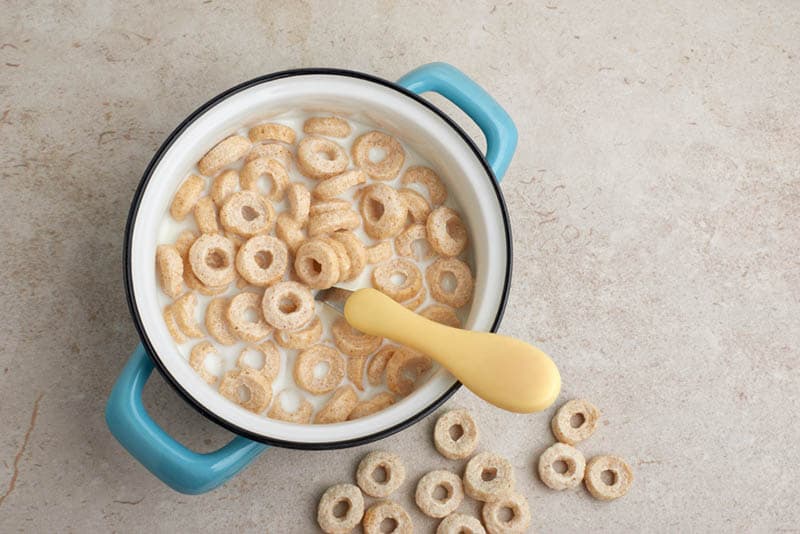
The answer is a very clear no and many cases of infant botulism that end up in emergency rooms often come from people who thought otherwise and decided to feed their kids things like General Mills’ Honey Nut Cheerios or honey-flavored graham crackers.
Sure, they might be tasty, but the fact is that kids, up until they’re about 6 months old shouldn’t have solid foods, and even then a good number of foods remain off-limits, honey and anything honey-flavored being one of them, at least until they become a one-year-old.
That said, even if you have a 12-month-old child, she still might not be safe.
Make sure to schedule an appointment with your pediatrician so they can give your little one a check-up to see whether or not your little one’s digestive system is ready to handle honey.
You have to wait for a full year because the risk of botulism drops drastically around that time as the body is ready to handle more complex elements of food without any sudden and negative reaction to it.
That’s why you don’t see any cases of botulism in older kids or fully grown adults.
What Is Infant Botulism?

As I mentioned earlier in the article, botulism is a toxin whose effects slow and even sometimes halt bodily processes, from muscles and breathing to digestion, leading to a child in distress if not treated immediately.
While its effects can be treated and fully eliminated if you act quickly, these same effects can prove to cause major complications and can even lead to fatal consequences if not taken seriously.
The problems themselves are caused by the poison unleashed by the bacteria found on the clostridium botulinum spores, something that’s often found in the ground itself, as well as the dust particles in the environment in general.
These dust particles can attach themselves to almost anything, but it ingrains itself in exposed, waxy substances like honey and sap from all sorts of trees.
While it does sound dangerous, it’s only something that affects kids who are below 12 months of age and is almost completely harmless for those above or those who have a more developed digestive and immune system.
However, the side effects of botulism for those who are actually affected by it can be quite severe and include the following problems:
• Problems with breathing
• Muscle weakness in extremities and the neck
• A weak cry
• Constipation
• Respiratory arrest
• Flat face syndrome (weakened facial muscles)
• The child not moving much
• Excessive drooling
• Problems with swallowing food
Should you spot any signs of this issue, get your kiddo directly to the pediatrician or even to the ICU so they can treat it properly if the problem is very severe.
Despite the fact that the problem is easily curable, it’s still a harrowing experience for your baby.
This is why you should always ask your doctor for medical advice first before looking anything up on the internet.
Sure, sites like mayo clinic and the like have some solid advice from time to time, but your doctors, pediatricians, and other health care workers can better diagnose it.
They’re the ones that can inspect your child for symptoms and properly determine what’s wrong and exactly how it should be treated.
As much research as I do and the experience that I have, my advice and the advice of anyone else on the internet should always come second to the real thing.
One more thing to keep in mind is that while honey might be the main cause of infant botulism, anything edible derived from tree sap shouldn’t be overlooked either.
One such product is the very tasty maple syrup that we all love putting on our pancakes.
It too contains the clostridium botulinum spores, and, even though it goes through a refining process that manages to eliminate a lot of the toxin from the final product when it goes from sap to syrup, there’s still a bit leftover.
That’s why I urge you to not risk it, wait a few more months until you introduce some more foods to your child’s developing diet.
Resort to breastfeeding and baby formula until the time comes. Believe me, young children will appreciate breast milk for much longer than you might think and you’re unlikely to be in any shortage of that any time soon.
Once your doctor gives the green light for solid foods, resort to small finger foods that don’t contain anything unsafe for child consumption and ingredients that will promote baby-led weaning.
RELATED: Best Baby Led Weaning Foods And All You Need To Know About BLW
How To Properly Introduce Honey To Your Child
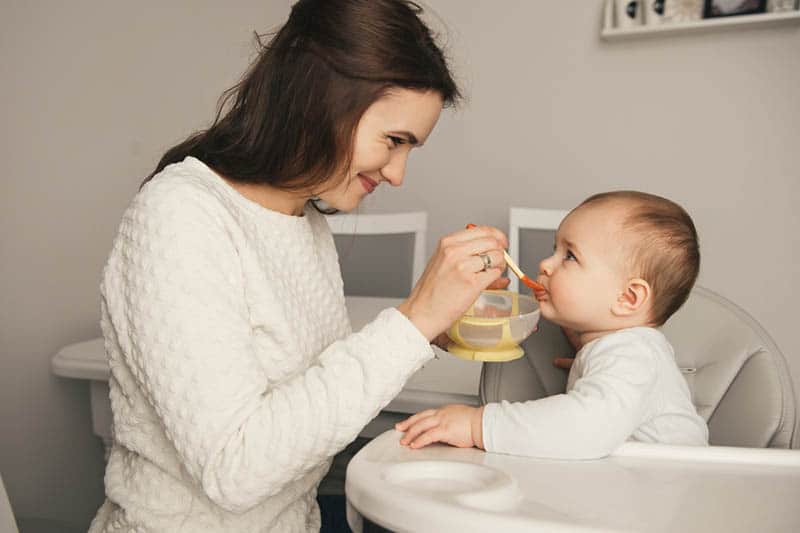
As far as honey goes, it can be a really healthy treat.
In time, it might even become one of your child’s favorites, but you need to know the answer to, When can babies have Honey Nut Cheerios? and how to properly introduce them to his or her diet.
First and foremost, you’ll have to wait 12 months and for your pediatrician’s approval before even trying.
However, once you have that sorted, you can slowly start introducing honey in small quantities, a tablespoon at most per week, if even that.
And be aware that it doesn’t actually have to be raw honey, there are alternatives available.
After 12 months is the right time to ask: Can babies have Honey Nut Cheerios? because this time the answer is going to be yes.
They’re a great and fun way to get your child to eat something a bit more healthy.
They are not, however, a replacement for actually healthy foods like fruits, veggies, and actual honey.
Honey Nut Cheerios are a variant of the original Cheerios and they’re rich in iron which is very important for your child’s development on top of the benefits of honey itself.
The base isn’t exactly the healthiest of things consisting of:
• Oats
• Corn starch
• Sugar
• Salts
• Whole grains
• Traces of honey
and some other ingredients.
Your base oatmeal is a bit healthier than that, but it’s a great reward for your kiddo every now and then to break away from all the other stuff that he eats.
While I’m an avid believer in all things healthy and organic, I know that kids can’t follow the same mantra and they need to have a little bit of enjoyment in their food.
The beauty of Cheerios isn’t just in their nutrition, but also in their shape which makes it an ideal finger food for your little one to practice his pincer grasp.
It’s really entertaining watching your little rascal gnawing on one grasping it like a crab.
The other good thing is that despite their appearance, they aren’t exactly a choking hazard either so you can safely give them to your kids as food but, as always, still be present just in case of any potential accidents.
These accidents usually occur with kids who can’t produce enough spit to help break down the Cheerios to a degree where they’ll be able to swallow them, making them stick in their throat for a bit and causing them to gag.
If you notice this to be the case, try pre-soaking them in plain water or with breast milk and they’ll have a much easier time eating it.
Outside of Cheerios themselves, I’d suggest trying to mix in minuscule amounts of organic honey with some baby foods just to add a little bit of extra flavor.
A Word Of Warning
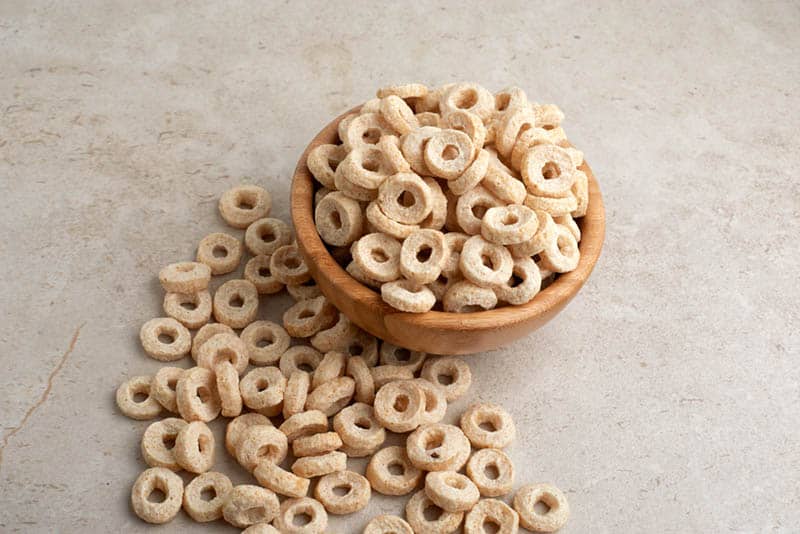
While Honey Nut Cheerios might be a very decent way to introduce honey into your child’s diet, it’s also a rather unhealthy one as mentioned previously so instead of asking, Can babies have Honey Nut Cheerios? rather avoid them altogether.
The compound itself is laced with sugar and a basic serving can have up to 9 grams of it which might lead to your kid becoming a bit hyperactive, making handling him tougher than it normally might have been.
However, if you really enjoy the idea of Cheerios being a food with which your kid can practice his fine motor skills in the form of a pincer grasp, then stick to the originals that are much healthier.
They have the same shape while also being a healthier option.
You’ll be able to recognize them by their signature yellow box.
A baby-safe cereal alternative
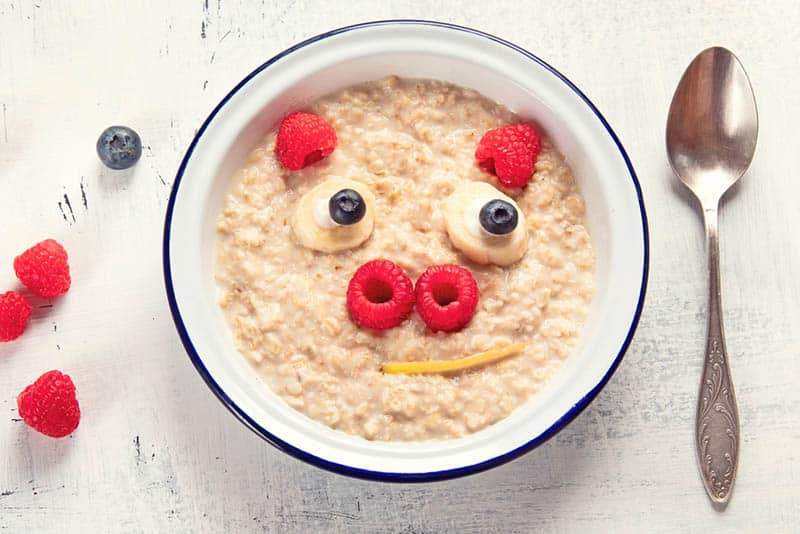
If you’re insistent on giving your kid a cereal variant to help create variety in his diet, you might want to give Gerber baby cereal a try.
It’s very healthy with a mix of oats, whole grains, and bananas without any added sweeteners and sugars, containing a healthy amount of probiotics that’ll help your baby grow without any problem.
And this is just one of their many flavor options, there are plenty more to choose from that might fit your baby’s palate better.
They might not be as ideal for gripping with your kiddo’s fingers, but they’re a lot healthier than Cheerios, that’s for sure.
In Conclusion
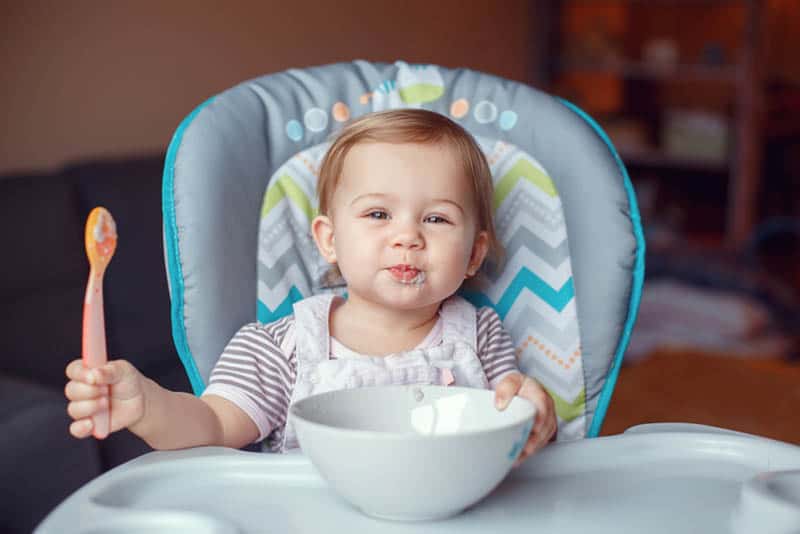
The question at the start was, can babies have Honey Nut Cheerios?
The answer is that they most certainly can, however, it’s not exactly the healthiest option for them and can’t be introduced to the child’s diet instantly.
It’s not just because of the high sugar content of the honey nut variant compared to the original, but the fact that it contains honey as it says in their namesake.
Honey isn’t exactly the safest substance for kids who are under 12 months of age and should be kept away from your little one until the pediatrics professional gives you their approval to start introducing it to your kid’s diet.
This is mostly because a child’s digestive system isn’t as advanced and as developed as that of a grown adult and consuming honey has a high chance of causing infant botulism, a condition caused by a toxin called clostridium botulinum.
This toxin is well known to cause difficulties breathing and irritation to an infant’s digestion, often to the extent that your little one will have to pay a visit to the ICU.
Some kids could also potentially be allergic to honey itself, so check with your doctor even if your kid is ready to start consuming honey, just in case that might end up being a factor.
Thankfully, there are other, baby-safe variants out there that provide similar benefits without putting your child’s health at risk.
My suggestion is to choose the healthier option for everyday use and stick to Honey Nut Cheerios as a reward you can give to your kids every now and then when they’re a bit older.
READ NEXT: When Can Babies Eat Puffs And Cheerios (With Best Puffs Guide)
Like this post? Please share or pin it for later. You can also stay in the loop and follow us on Facebook, Instagram or Pinterest.
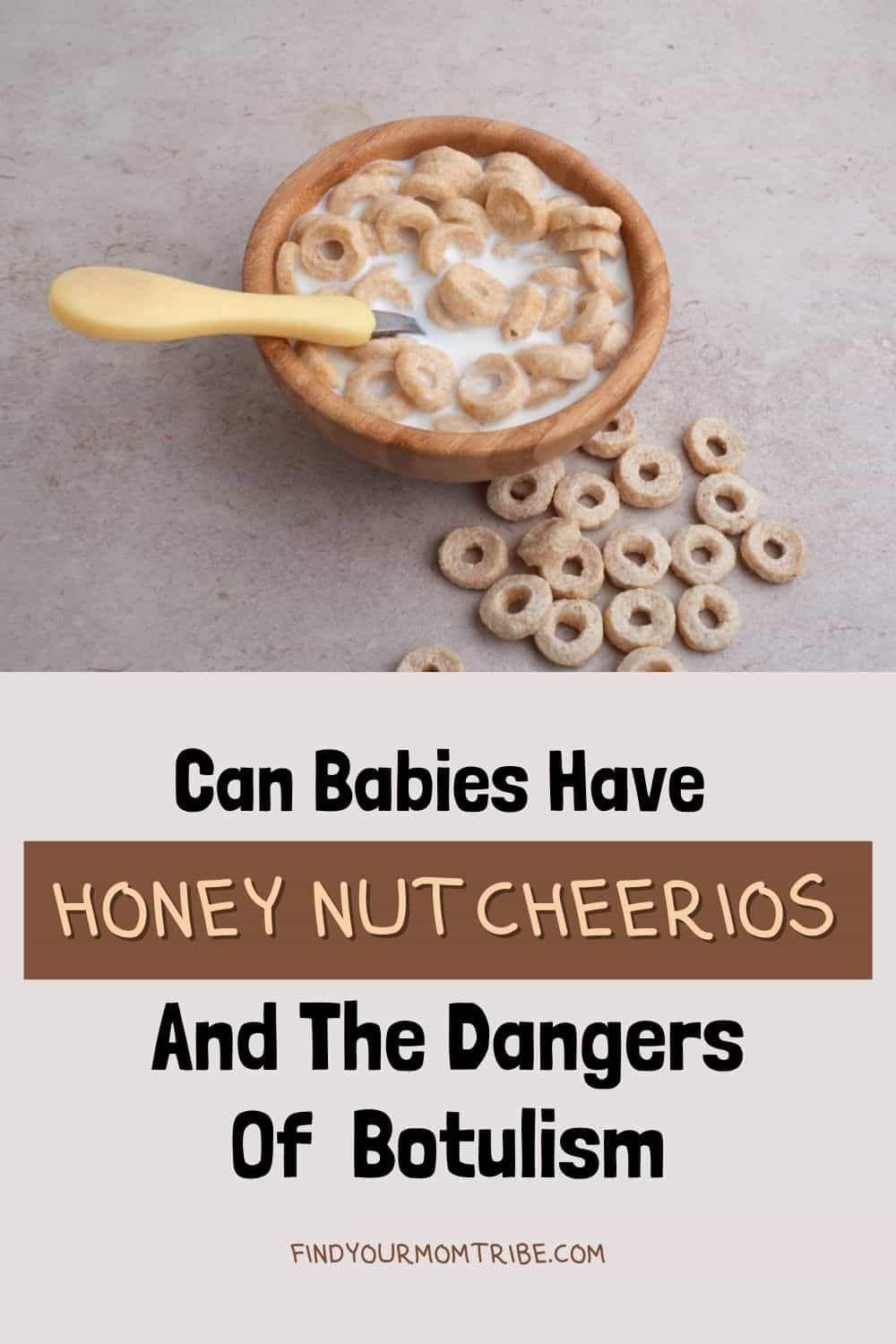
We love honesty! Find Your Mom Tribe is an Amazon Associate and we earn from qualifying purchases through affiliate links at no extra cost to you. Please see our full Amazon Affiliate disclosure for more information.

